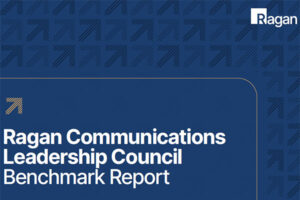3 keys to sparking better manager communication
Follow these tips to empower and equip the people who can either make or break your company’s levels of employee engagement.

Most communication departments excel at delivering content: strong messages and good materials a company’s managers can share with their teams.
To be sure, business leaders and managers need that substance. But they might need something more.
Smart communicators and comms teams become indispensable to their organizations by stepping into the role of “business partner” or “trusted advisor.” (I may be known for my distaste for jargon and buzzwords, but I still know how to use them.)
If you’d like to distinguish yourself this way—and level up your organization’s overall savvy to communicate—then I suggest focusing on managers’ communication confidence.
Confidence is a Goldilocks thing. The best manager-communicators have a level of confidence that’s just right. Those with too much confidence may talk more than listen, miss details, or assume that communication is “complete” simply because they have spoken. Those with too little confidence may hold back, rush past or procrastinate on conversations, or assume that communication falls under someone else’s job description (probably yours).
How can you help? Here are three tactics you can employ to improve communication for managers at both ends of the confidence spectrum.
1. Share discussion prompts.
When it comes to reaching employees, managers are your most valuable communication channel, and that channel should go both ways. So, in addition to giving managers information to share, provide them with questions or prompts to stoke conversation with their teams. Imagine every team in your company talking next week about “the productivity tool I can’t live without” or “one question I’d like to ask my counterpart at Competitor X.”
Prompts help under-confident communicators get a conversation started while providing a focal point for hyper-confident communicators to stay on message.
2. Ask for “struggle stories.”
Colleagues are probably used to your pleas for success stories: those anecdotes you crave to keep internal and external feeds coursing with fresh, relevant content. Upend that conversation and ask instead for honest accounts of managers’ struggles to communicate. These stories are not for you to share, but to study. Be brave, because the answers may reveal weaknesses anywhere in the communication pipeline, including you. But if you don’t know what’s broken, how can you fix it?
Struggle stories give under-confident communicators a chance to ask for help while allowing the hyper-confident to weigh in on opportunities for improvement.
3. Offer individual coaching.
Whether you provide counsel yourself or engage a third party, consider offering every manager a few hours of communication coaching each year. Working 1:1, you can focus on specific skills (writing, presenting, active listening, etc.), using real-time projects as a virtual classroom. It’s the ultimate in on-the-job training.
In coaching, under-confident communicators find a safe place to face fears and take risks; in that same non-threatening environment, hyper-confident communicators can reach for lofty goals and may even let their guard down to embrace constructive feedback.
Beth Nyland runs Spencer Grace LLC and is co-founder of Story Mode—a program that brings storytelling and creativity into the workplace. Learn more about Beth’s work and ideas at www.instorymode.com and www.spencergrace.com.







I really like the idea of not just giving managers info to share with their teams, but to give them prompts for questions to ask. I often feel that managers truly want to connect more with the people they lead, but sometimes don’t know how to get to the conversations that matter most.